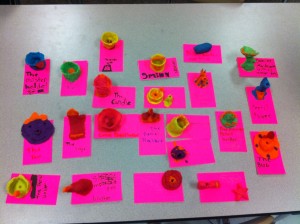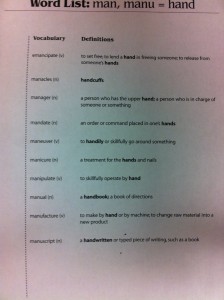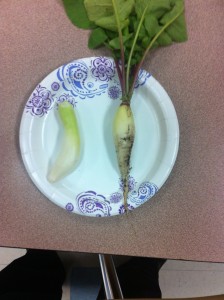Again APTT and Parent Teacher Conference info at the bottom. The annoying reminders will continue until morale (or sign-ups for P-T conferences at least) reaches 100%!!
I had almost forgotten how Monday feels….
IT FEELS FANTASTIC!
This morning we took another look at story maps, as we had some problems with them on our last assessment. Students need some real practice identifying the IMPORTANT events in a text. Often students can become fixated on a minor detail and assign it importance that it does not merit. We should be asking ourselves if the event is important to the story or not. If it were not included, would the story still make sense? If the answer is yes, we could drop it and not affect the story, then it is likely not an important event.
Tonight students have a good bit of work to do.
First, they should read this passage:
AmericasBird
After reading the passage, they should draw and fill in a main idea organizer on the second page of the packet. If you’ve forgotten, they look like this:
MainIdeaOrganizer
They should then answer the questions with the passage. YES each answer must have reasoning in the form of “I know this because….”. That means EVIDENCE from the passage, not just “I know this because it makes the most sense”.
This was all classwork last week, so there honestly should be *much* left, if at all.
Next, they should read this passage:
eli_s_mission_660_passage_and_questions
They *SHOULD NOT* answer the questions.
Instead, they should fill out a story elements organizer:
StoryElements
Then, they should tell me about Eli, using a character traits organizer:
Blank char sheet
We then took a quick Science Vocab quiz that we didn’t get a chance to do on Friday. These look much more promising than the first vocabulary quiz we took, and I am looking forward to getting a better look at them.
We then spent some time in the computer lab doing some Lexia. Students are coming along nicely with this program. It presents them with tons of different activities to improve their reading, comprehension, and other essential literacy skills.
Finally we started talking about fractions today. We said that a fraction describes a piece or pieces of something. If I take an object and break it into four EQUAL parts, then each part is 1/4th. If I take an object and break it into 10 EQUAL parts, each part is 1/10th. Two parts would be 2/10ths, and so on.
We then took a look at equivalent fractions. We made the important distinction that equal does not mean the same. It means same value. 1/4th is equal to 2/8ths, but they are not the same. In the first case we have one piece of something that has been cut into four parts. In the second case we have two pieces of something that has been cut into 8. They both describe the same amount, but they are not the same. This is important for students to understand when we are talking at length about equivalent fractions.
Tonight students have some equivalent fractions to work with. They should finish the fraction models at the top, and then use those models to help them find the equivalent fractions at the bottom.
EquivalentFractionsSep14
so, tl;dr
Read passage, answer questions with reasoning, make a main idea organizer for the passage:
AmericasBird
Read passage, don’t answer questions, fill out story elements organizer, and character organizer for Eli:
eli_s_mission_660_passage_and_questions
Finish fraction models, fill in equivalent fractions:
EquivalentFractionsSep14
And as always, read!
Have a good one,
-Mr. Potter
APPT and Parent-Teacher Conference info:
Academic Parent Teacher Teams are an opportunity for teachers and parents to work together on the same set of skills in order to progress students. The meeting is the evening of the 17th, which is next Thursday. I would very much appreciate seeing everyone there. I will probably bug you about this. Apologies in advance!
I have also set up a sign-up genius for parent teacher conferences. There is a link at the bottom, and also up at the top under ‘general links’. The majority of the times up right now are are either 7-8 in the morning, 4-5 in the afternoon, or 5-6 in the afternoon. If these do not work for you please let me know. If you give me a time that works for you, I will make it work for me. If you don’t sign up for one of these, I will probably also bug you about that. Apologies in advance!
P-T Conference Sign-Up



